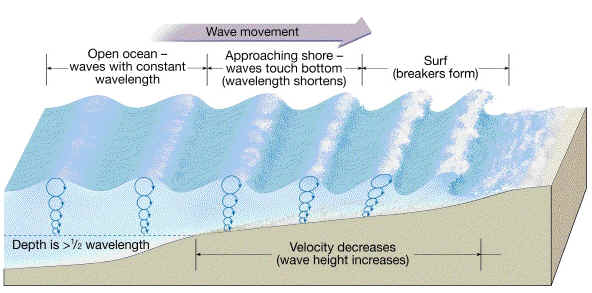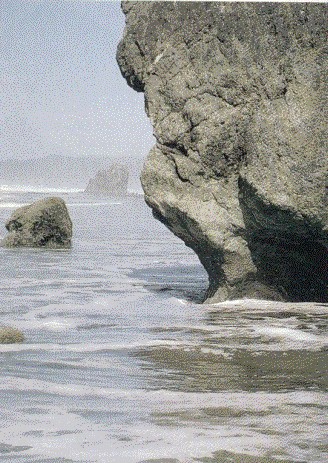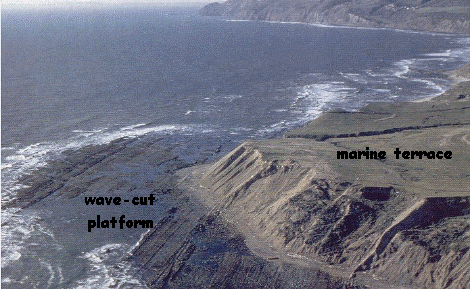
COASTLINES
Waves can:
a. ERODE rock from high energy environments (fast moving water).
b. TRANSPORT sediment, both from coastal erosion, and sediment supplied to the
coast by rivers.
c. DEPOSIT sediment in low energy coastal environments (slow moving water).
Wave Erosion.
Wind-generated oscillatory waves break when they approach shore. The resulting
landward-directed surge of water can cause erosion, particularly on steep
coastlines because all the wave energy is concentrated into a narrow intertidal
zone.

This usually results in a wave-cut notch at the base of cliffs, which periodically collapse, maintaining the steepness of the cliff.

The result of continuous wave erosion at the base of cliffed coastlines is the formation of a wave-cut platform - similar to parallel retreat & pediment formation in deserts.

If sea-level falls, the wave-cut platform becomes a marine terrace.
Where the slope of the coast is gentle, the wave energy is dissipated over a wider intertidal zone, creating lower energy conditions and allowing sediment to accumulate, forming a wide beach. Erosion still occurs in the form of alongshore sediment transport.

The alongshore-moving sediment accumulates at bends in coastlines forming various depositional landforms (e.g. spits, baymouth bars, barrier islands). Many spits, baymouth bars and barrier islands create sheltered coastal wetlands where salt marshes develop. The shelter from wave-action allows mud to accumulate (usually from streams and rivers) and salt-tolerant vegetation grows on the mud.
Example Questions:
1. Describe the effects of waves on a). steep coastlines, and b). gently-sloping coastlines.
Back to review index.